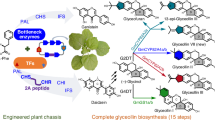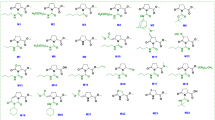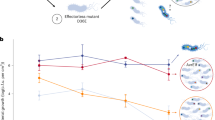Abstract
PHYTOALEXINS are inducibly formed higher plant metabolites that are antibiotic to certain potential plant pathogens1. At least 75 plant species representing 20 families have been shown to accumulate phytoalexins in response to infection1–3. Phytoalexins also accumulate in plants in response to various agents termed elicitors1, including substances of pathogen origin (biotic elicitors) and abiotic elicitors such as heavy metal salts and detergents1–3. Elicitors may be useful for investigation of the molecular basis of phytoalexin production or disease resistance expression1. However, the mechanisms by which such diverse elicitor molecules induce phytoalexin accumulation in plants are unknown. I have found4 that levels of glyceollin, a phytoalexin produced by soybean [Glycine max (L.) Merr.] hypocotyls in response to infection with the fungal pathogen Phytophthora megasperma var. sojae A. A. Hildb., are regulated by relative rates of induced biosynthesis and constitutive degrading activity. I report here the effects of various biotic and abiotic elicitors on biosynthesis and degradation of glyceollin in soybean tissues.
This is a preview of subscription content, access via your institution
Access options
Subscribe to this journal
Receive 51 print issues and online access
$199.00 per year
only $3.90 per issue
Buy this article
- Purchase on SpringerLink
- Instant access to full article PDF
Prices may be subject to local taxes which are calculated during checkout
Similar content being viewed by others
References
Keen, N. T. & Bruegger, B. ACS Symp. Ser. 62, 1–26 (1977).
Cruickshank, I. A. Rev. Phytopathol. 1, 351–374 (1963).
Kuć, J. A. Rev. Phytopathol. 10, 207–232 (1972).
Yoshikawa, M., Yamauchi, K. & Masago, H. Physiol. Pl. Pathol. 13 (in the press).
Ayers, A., Ebel, J., Finelli, F., Berger, N. & Albersheim, P. Pl. Physiol. 57, 751–759 (1976).
Yoshikawa, M., Yamauchi, K. & Masago, H. Physiol. Pl. Pathol. 12, 73–82 (1978).
Yoshikawa, M., Masago, H. & Keen, N. T. Physiol. Pl. Pathol. 10, 125–138 (1977).
Yoshikawa, M., Yamauchi, K. & Masago, H. Pl. Physiol. 61, 314–317 (1978).
Ayers, A., Ebel, J., Valent, B. & Albersheim, P. Pl. Physiol. 57, 760–765 (1976).
Keen, N. T. Science 187, 74–75 (1975).
Author information
Authors and Affiliations
Rights and permissions
About this article
Cite this article
YOSHIKAWA, M. Diverse modes of action of biotic and abiotic phytoalexin elicitors. Nature 275, 546–547 (1978). https://doi.org/10.1038/275546a0
Received:
Accepted:
Issue date:
DOI: https://doi.org/10.1038/275546a0
This article is cited by
-
Effects of alginate oligosaccharides with different molecular weights and guluronic to mannuronic acid ratios on glyceollin induction and accumulation in soybeans
Journal of Food Science and Technology (2018)
-
Effects of exogenous methyl jasmonate in elicited anthocyanin-producing cell cultures of ohelo (Vaccinium phalae)
In Vitro Cellular & Developmental Biology - Plant (1999)
-
Biotic and abiotic initiators for rishitin formation and accumulation in tomato
Folia Microbiologica (1997)
-
Correlations between in vivo resistance to Fusarium and in vitro response to fungal elicitors and toxic substances in carnation
Theoretical and Applied Genetics (1985)



